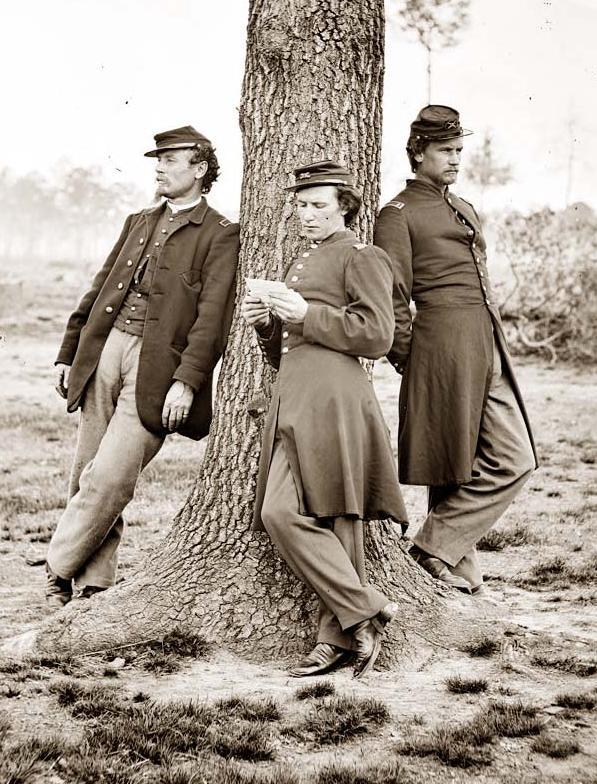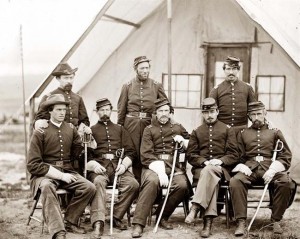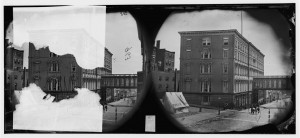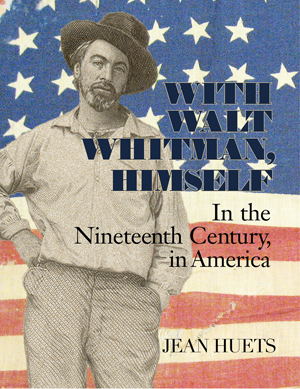
Those beautifully vivid 19th century photos–the imagery so sharp you feel as if you can touch the fabric, the buttons, the hair–required people to remain really still for several seconds. The slightest movement would soften the image.

19th century photography studios stocked props, literally, to steady their subjects. Outside the studio, photographers enlisted anything from tent poles, as in a portrait of Grant, to trees, as in the photo of the pensive officers.
The dismal, corpse-littered aftermath of battle was all the photographers had to take: men fighting just won’t stop and pose. Children and animals are much the same.
Okay, we knew all that. But it took me a while to put that fact to work solving something I’d wondered about: why are people in old group photos often touching each other? Answer: To steady themselves for the sharpest picture possible.

The long exposures can make streetscapes in photos look deserted. Animals and people in motion are “erased.” Sometimes, though, you can spot their ghosts. See the “ghost” men on the corner, facing the two men on horses?
WITH WALT WHITMAN, HIMSELF: IN THE NINETEENTH CENTURY, IN AMERICA | by Jean Huets
“A true Whitmanian feast—for the intellect as well as for the eyes.” — Ed Folsom, editor Walt Whitman Quarterly
Amazon | B&N | bookshop.org (supports indie booksellers)
signed copies, free shipping order from Circling Rivers
“A beautiful book of windows onto the life of Walt Whitman…. From the clear ringing prose to the fascinating photographs and colored illustrations of the great poet’s life we find the man anew—standing in his time and looking straight at us. [Huets] has made a book of marvels and I can’t put it down.” — Steve Scafidi, Poet Laureate, Virginia
Explore the fascinating roots of Whitman’s great work, Leaves of Grass: a family harrowed by alcoholism and mental illness; the bloody Civil War; burgeoning, brawling Manhattan and Brooklyn; literary allies and rivals; and his beloved America, racked by disunion even while racing westward. Over 300 color period images immerse the reader in the life and times of Walt Whitman.
Sawyer & Soldier reading photo via old-picture.com / Ballard House photo via Library of Congress / For an interesting story about Major Henry W. Sawyer, read this.

More interesting insights.